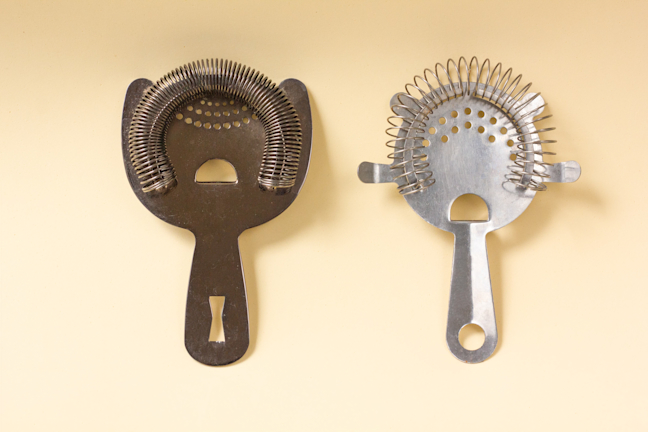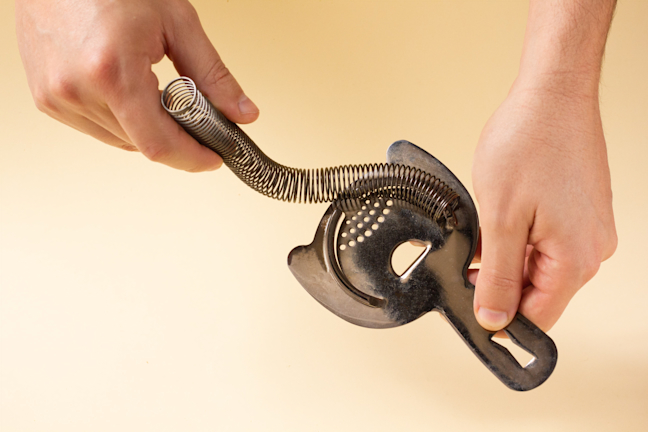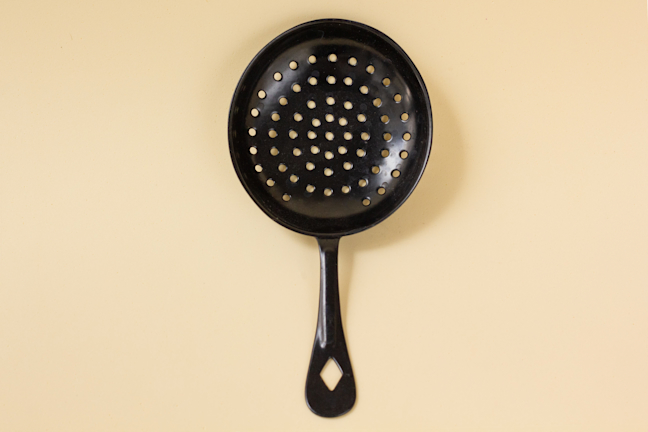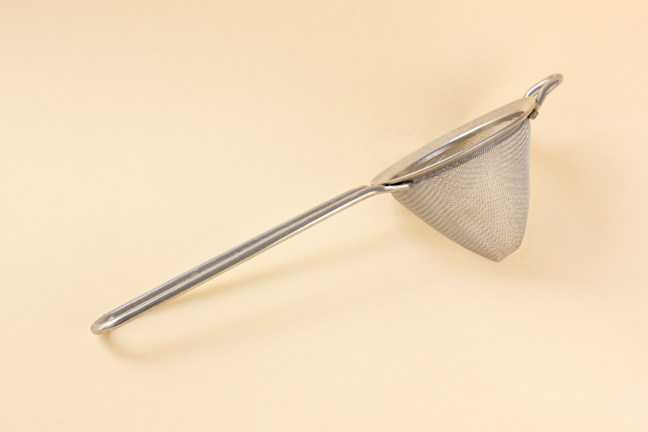Tools of the Trade: The Essentials
Tools are an integral part of the cocktail craft: They will allow you to create and follow recipes which will produce great, consistent results. Not all tools are created equal; quality and form will correlate to how much enjoyment (or frustration!) you get from using them. Investing in the right equipment will make your life easier, and allow you to really focus on your craft.
What follows is a list of the 5 items we consider absolutely essential to creating cocktails. Consider investing in these early on and then slowly growing your collection as the need arises.
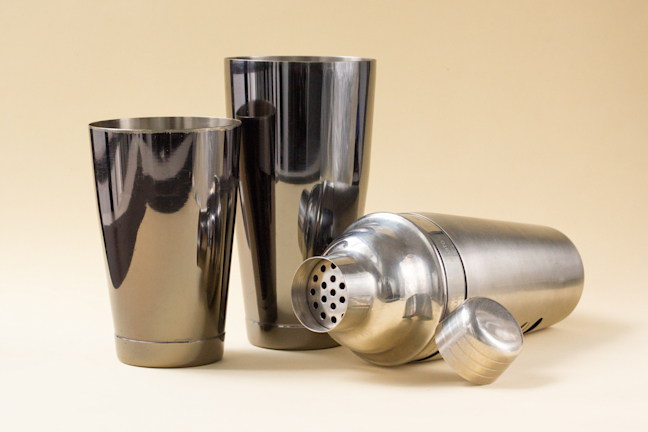
Cocktail Shakers
Cocktail shakers are used to mix and chill a drink. They come in different sizes, shapes and are made of different materials. While mostly used for shaking, you could also stir your drinks in these.
By and large, you’ll come across three types of shakers:
A Boston shaker is generally made of two metal tins, one big and one small. They are often made of stainless steel, but some folks use a pint glass in place of one of the metal tins.
Going with metal on metal will give you a much more efficient chilling tool: Glass is slower at conducting heat, which means you’ll have to shake longer to cool your drink, creating the risk of over-dilution. Furthermore, glass can obviously break, whereas the metal tins are virtually indestructible. Finally, the stainless steel is flexible, so it will be easier to both create and break the seal that forms when you shake.
Some Boston shakers are made so the tins are heavily weighted at the base. This will help you with shaking and with preventing the tins from topping over.
If you don’t have a shaker yet, we strongly recommend you get a Boston shaker.
Cobbler shakers usually have three parts: A mixing cup, a top which includes a strainer, and a cap to close said strainer. The strainer piece will only work for big pieces of ice, it won’t stop the smaller ones, nor small pieces of pulp or fruit, or the small particles of herbs you may use.
Cobbler shakers are elegant, and are the default option in Japan. A lot of proponents of the Cobbler shaker note its size and shape provide improved control and precision. It’s no surprise this type of shaker is ubiquitous in every beginner cocktail kit out there, it’s a classic.
However, the Cobbler shaker isn’t without its faults. The main issue you’ll find is that they tend to jam after shaking, and this seal can be downright impossible to break at times. They’re also prone to leaks. Higher quality cobbler shakers shouldn’t have these issues.
If you already have a Cobbler shaker and are encountering some of the negatives we've pointed out, consider giving a Boston Shaker a try, or finding a higher quality substitution.
You'll be making a lot of cocktails with your shaker, so don't allow it to be a source of frustration!
A Parisian or French shaker consists of a mixing tin and a cap. Its design goes all the way back to the mid 1800s and its elegance cannot be denied. It functions in very much the same way as a Cobbler shaker, but it doesn’t have a strainer. As such, you’ll encounter some of the same positives and negatives we described previously.
You can use any container which can hold enough volume and that can be closed to prevent leaks. Mason jars are a good example of a viable alternative.
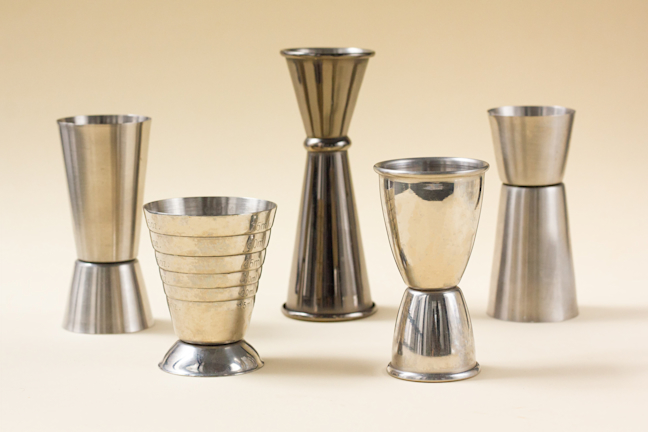
Jiggers
The jigger will be your main measuring tool. Jiggers often have two sides and generally the small cup is half the measure of the bigger cup. Other styles of jigger instead have one large cup, where most measurements will be made, and a very small one, for ingredients that will be used sparingly.
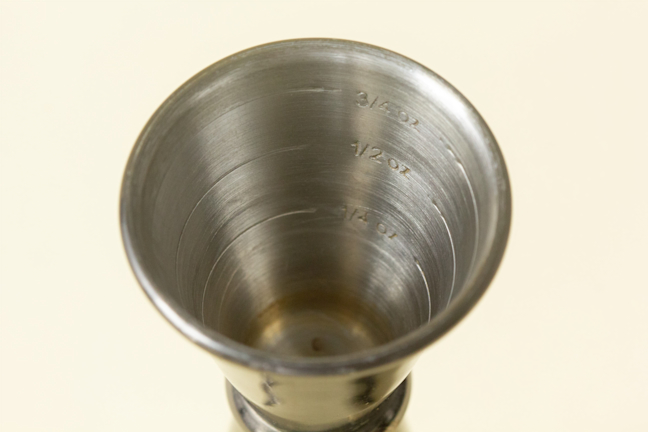
When shopping for a jigger, keep this in mind:
- Look for jiggers to have clearly visible measurements on the inside of each cup. Ideally, they should have markings that denote ¼, ½, ¾ (on the small cup) and 1½ (on the big cup) of the volume they hold.
- Jiggers are tall or short; tall jiggers are more forgiving. If you are measuring and go slightly over in a tall jigger, the extra amount you will have added will be less than the one you would’ve added with a short jigger.
- Look for jiggers that are straight near the top of the cups. If they’re mostly diagonal, it will be harder for you to measure to the top without spilling the contents.
You could use a measuring spoon instead of a jigger. However, if you find yourself frustrated by not being able to be precise with it, or if you’re tired of spilling, it might be time to invest in a jigger!
Strainers
After you stir or shake a drink, you’ll often want to strain it into the glass you’ll be serving it in. Straining a cocktail prevents ice from diluting the drink further. Plus, you’ll be able to remove any pieces of fruit or herbs you may have thrown into the mix.
There are three primary types of strainer:
The Hawthorne strainer is the most versatile and the one you’ll likely use the most. This strainer sits on top of your mixing tin and has a tab on the top that lets you adjust the opening through which liquids will go through. That opening is called the gate. When you close the gate, the coil spring will trap small pieces of ice, fruit or herbs.
You can easily remove the spring in order to wash the strainer thoroughly after each use.
The Julep strainer predates the Hawthorne variety and is more commonly used in stirred drinks, where smaller pieces of ice are not present. It’s usually placed on top of a mixing glass, either facing up or down.
The Julep strainer is more of a visual tool, harking back to a previous era. That in itself is not without its merits, but the Hawthorne will do everything the Julep can and more, so if you are on a budget skip the Julep strainer for now.
Tea strainers are used to further strain cocktails and make it so they're devoid of the smallest bits of unwanted ice or produce.
A Hawthorne strainer is usually paired with a Tea strainer, allowing you to pour with an open gate and catch everything the Hawthorne didn’t. This technique will let you serve a drink faster, which is something to keep in mind if you’re making a lot of drinks in quick succession.
If you’re using a Cobbler shaker, you’ll want to pair it up with a Tea strainer; the built-in strainer in the Cobbler won’t catch anything but big pieces of ice.
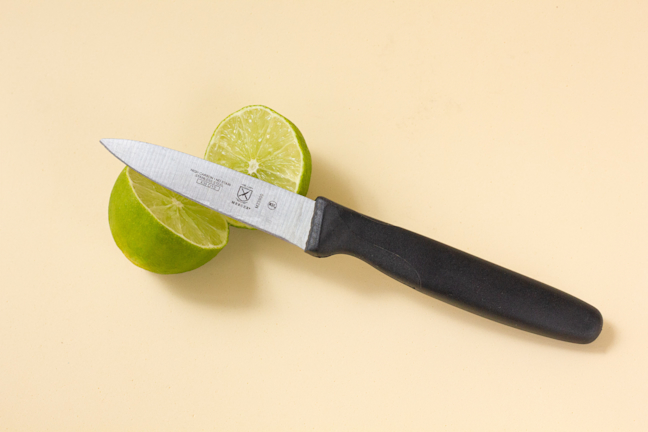
Knives
You’ll be using a knife to cut fruits and vegetables. You can use any knife you already have, either flat or serrated. If possible, get a paring or utility knife; their small size will let you perform more intricate tasks (like peeling).
A good paring knife will allow you to create garnishes out of citrus peels, which means you'll be able to properly decorate your cocktails.
Take good care of your knives, and don’t let the blade get dull – the duller the blade, the more strength you’ll have to apply to cut, which can lead to accidents.
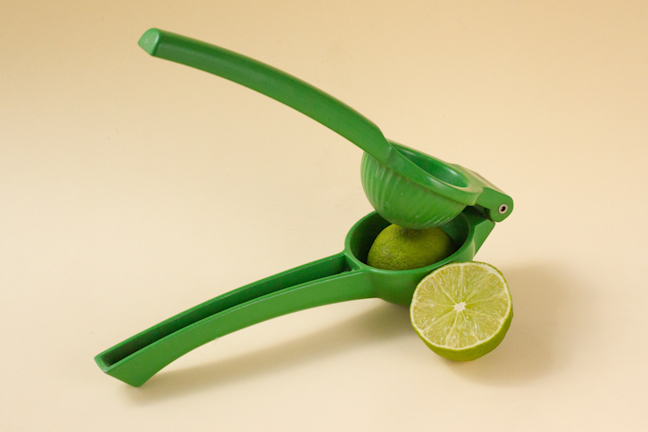
Citrus Press
You will go through lemons and limes more than any other fruit. You could, in theory, just squeeze them by hand, but that will get very old, very fast. A hand press is easy to use and to clean.
When buying a citrus press, consider mainly three things:
- It has a good build: As we said previously, you’ll go through a lot of fruit with this tool, so don’t buy something that looks like it’ll break after a few uses.
- The holes in the bottom are angled to a central point: Often times you’ll have a jigger under the hand press, which means that if the holes are not pointing to a central spot, you’ll be spilling juice all over the place.
- It’s decently sized: You’ll use this mostly for lemons and limes, so try to buy one that will fit the produce available to you.
If you already have an electric juicer, you can use that instead.
Be prepared to test it first and determine if the flavor you’re getting in your juice isn’t too bitter. Electric juicers will most likely scrape the white pith off of the citrus, which will impart a bitter taste.
Closing Thoughts
As with all tools, everything is down to your preference. These suggestions are meant to guide you on the right path, but we encourage you to test everything yourself to truly find the best fit.
If you're looking for more equipment, you can take a look at our complete reference on Bartending Tools.
The links we provided previously are Amazon Affiliate links, meaning that if you make a purchase we get a small kickback, at no increased cost to you. By doing so, you'll be helping keep Cocktailarium free to use!
